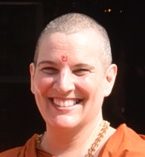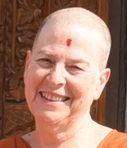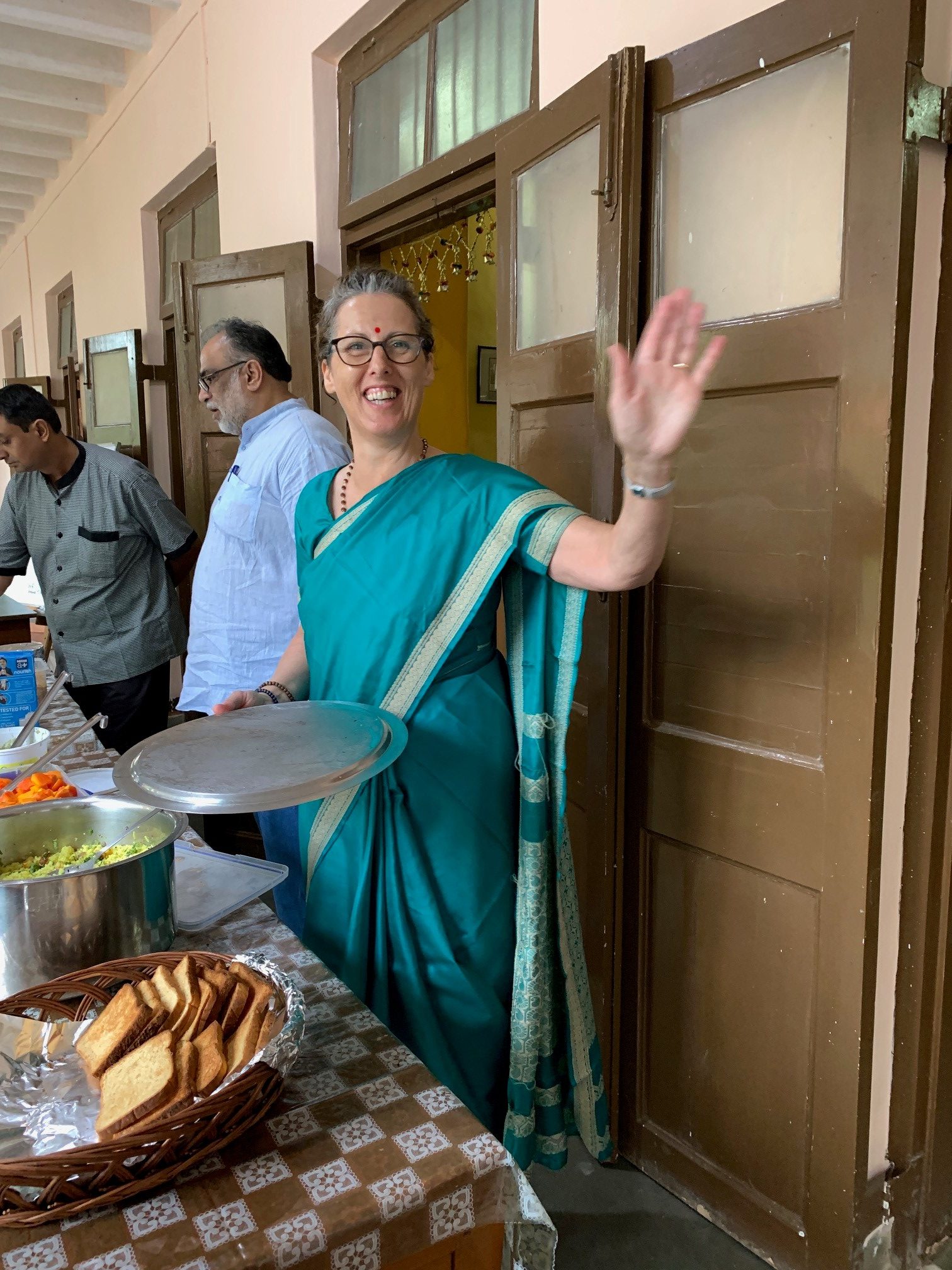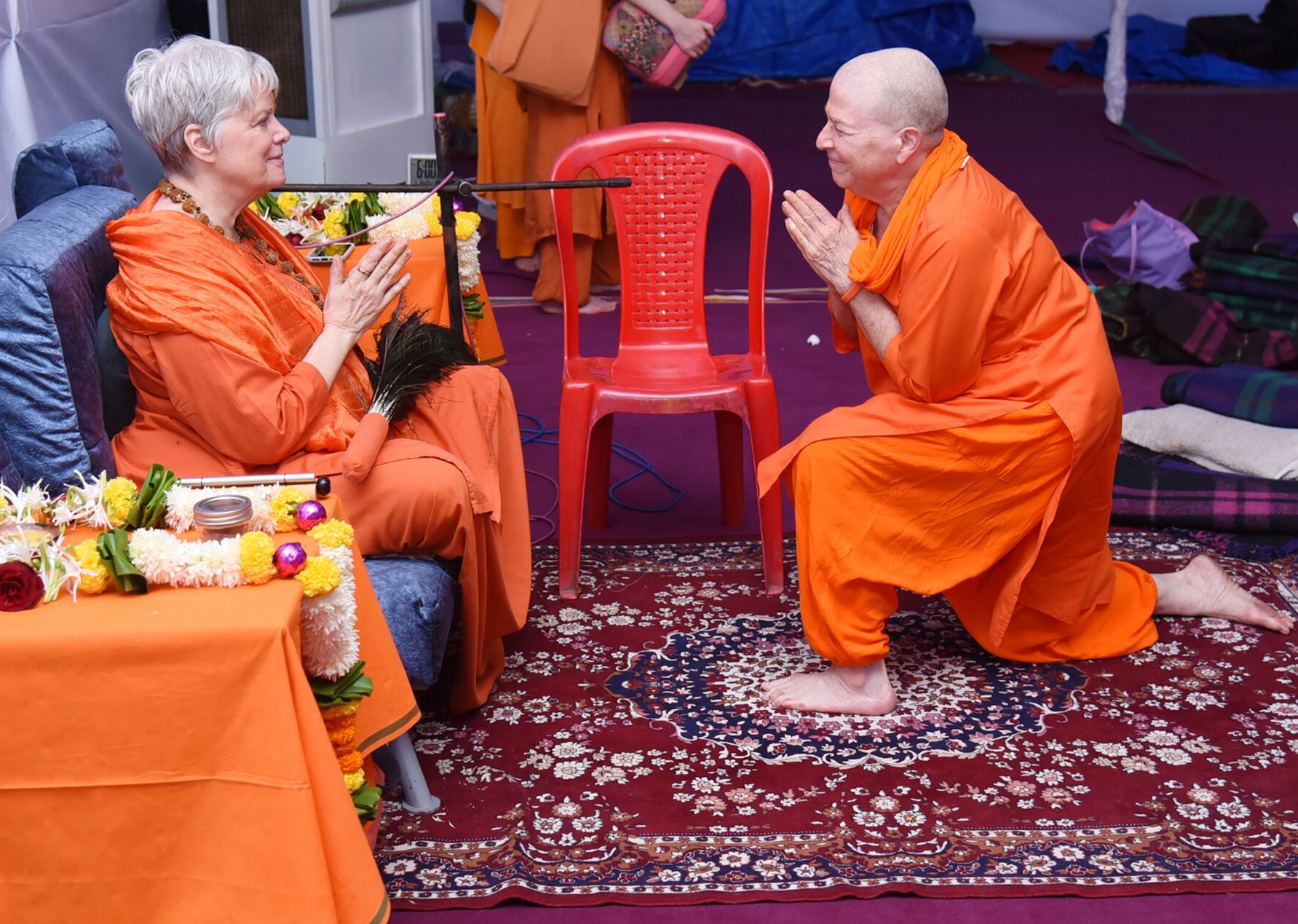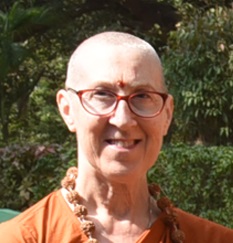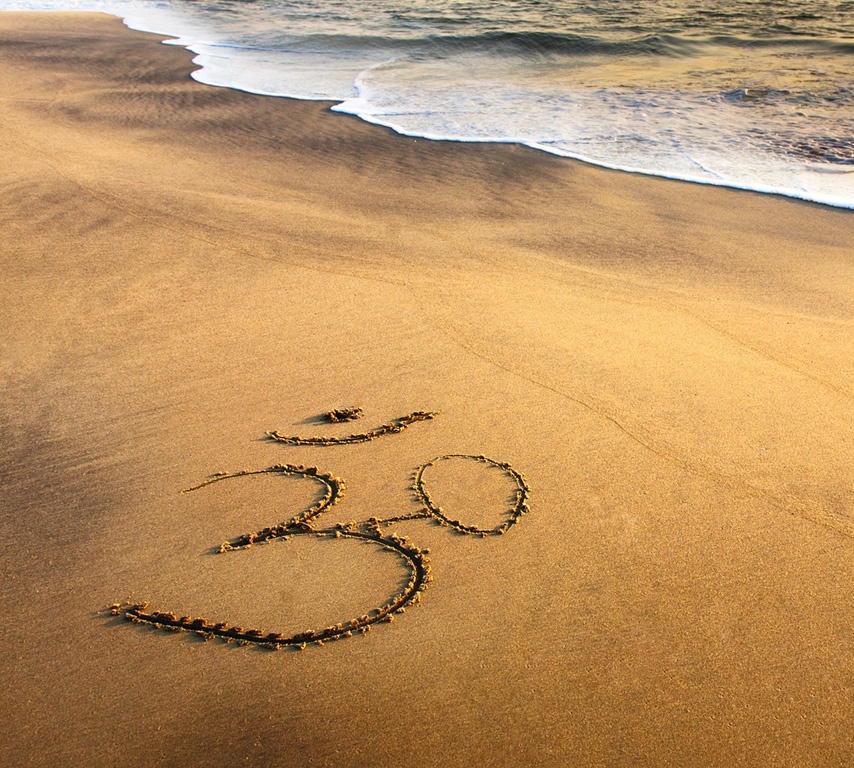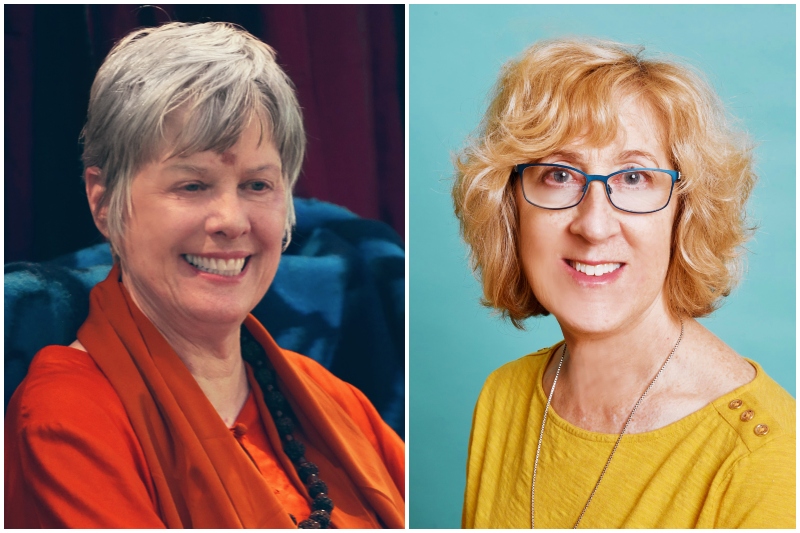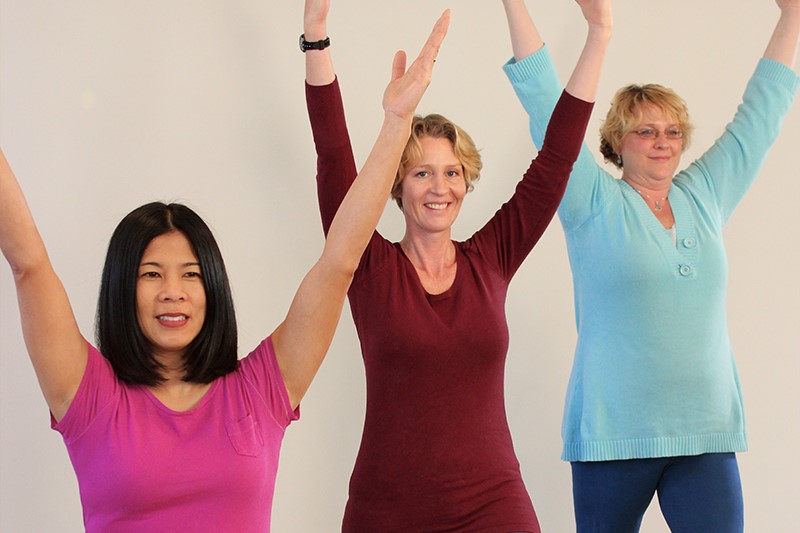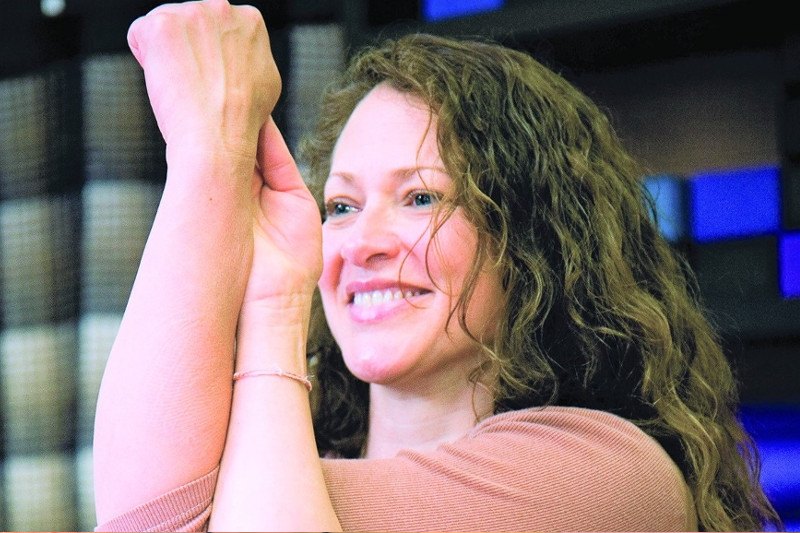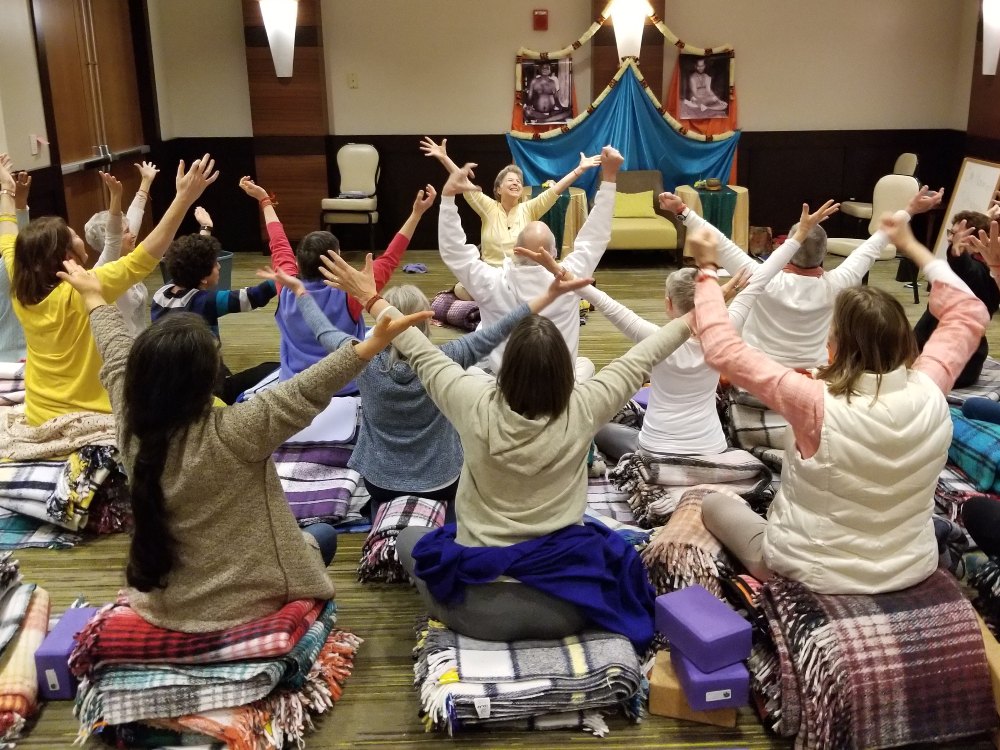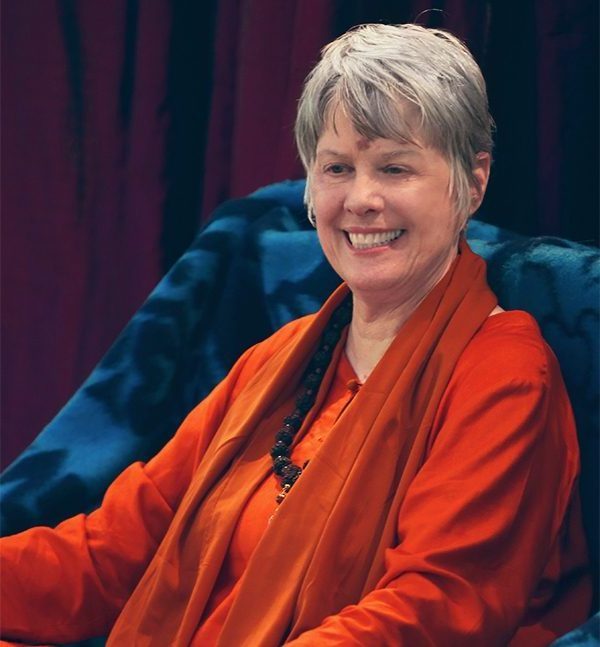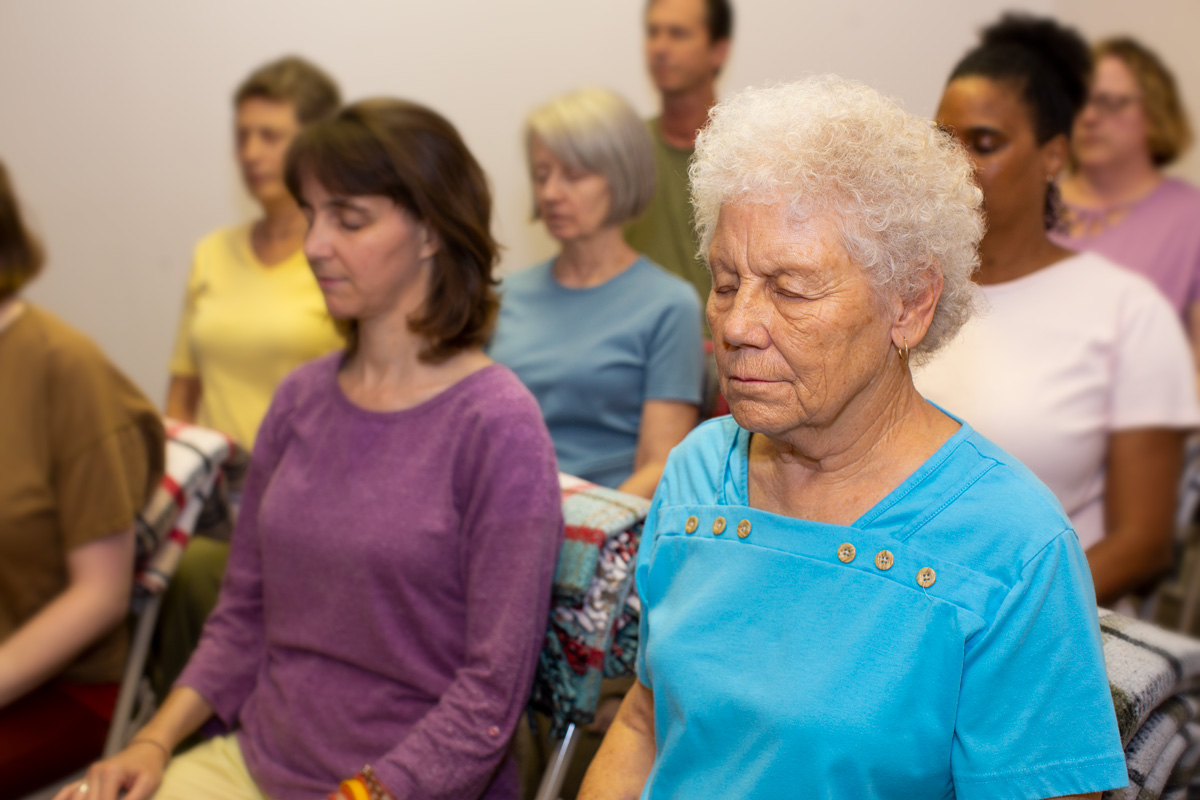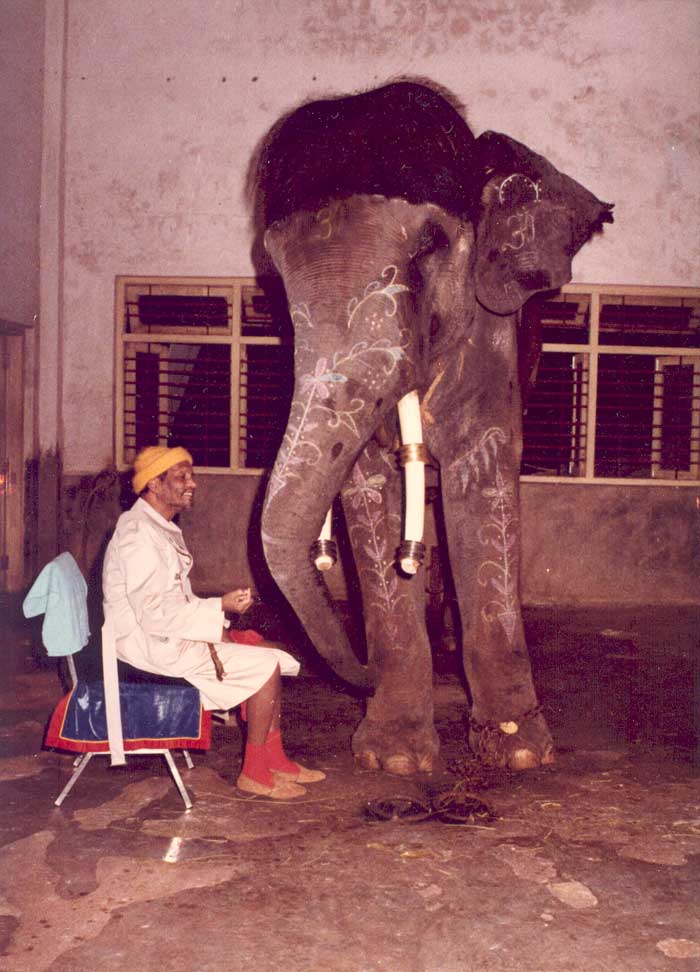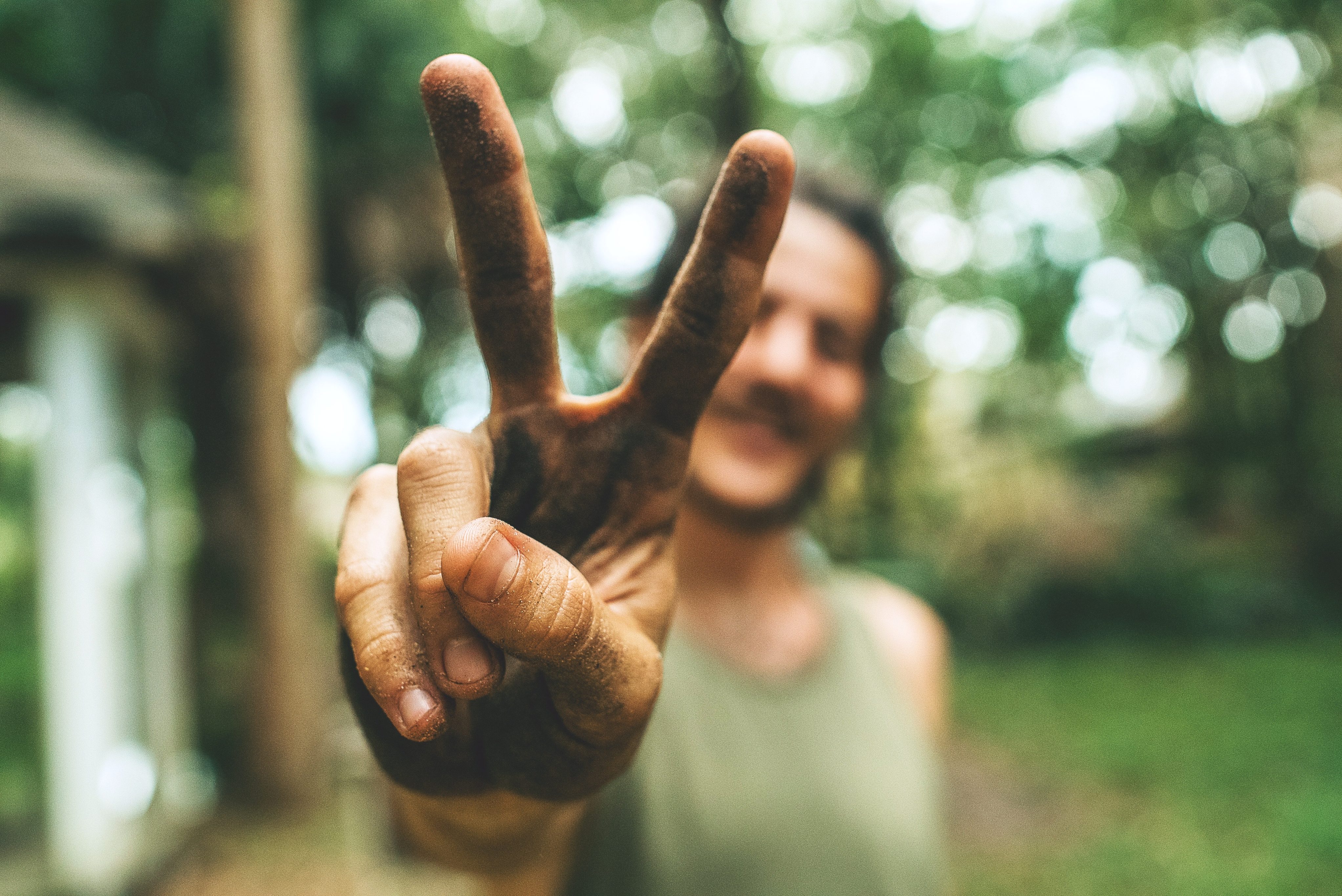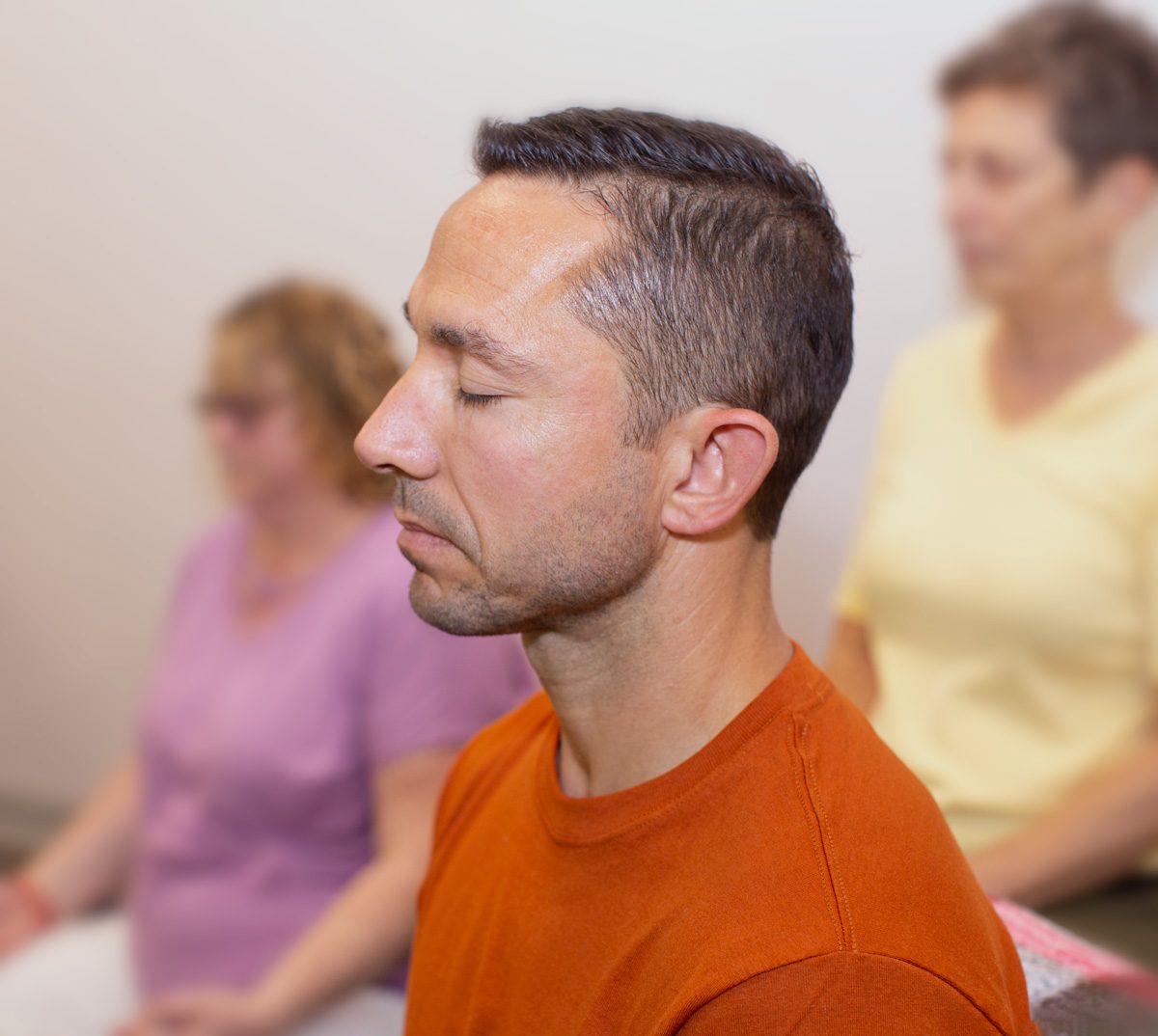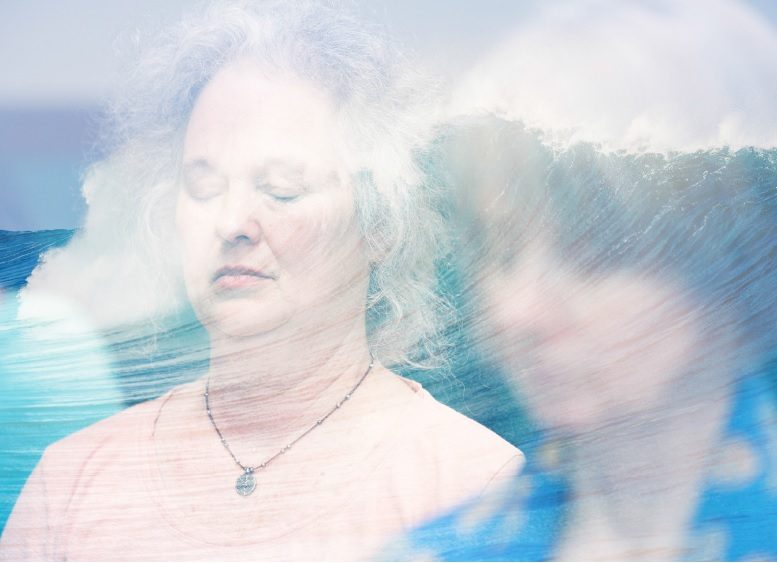From my airplane window, I watched the brilliant orange sun setting over a cloud bank. Luminous rays transformed the clouds into a glowing field of orange, then red, then pink and gold. I was transfixed. I was flooded with joy. I felt a peaceful, soaring freedom.
Everyone has these euphoric moments, though what triggers them will be unique to each. For you, perhaps it’s a snowstorm, a song, or the vista from a mountain peak. For a moment, time stops. You are propelled into an ecstatic, elevated state. Whatever the external trigger, your euphoria is happening inside.
 Where did the joy I was experiencing come from? While the rays of the sun were beautiful, they weren’t bathing me with joy-rays. The joy, peace and freedom flashed up from within. This inner arising is your own “capital-s Self.” Your own Self is the One Reality that is being everything that exists, including the sun, the snow, the song, and you. You are that One Divine Reality, Consciousness-itself, that yogis call by the holy name, “Shiva.”
Where did the joy I was experiencing come from? While the rays of the sun were beautiful, they weren’t bathing me with joy-rays. The joy, peace and freedom flashed up from within. This inner arising is your own “capital-s Self.” Your own Self is the One Reality that is being everything that exists, including the sun, the snow, the song, and you. You are that One Divine Reality, Consciousness-itself, that yogis call by the holy name, “Shiva.”
The rest of the time, you simply don’t know that that’s who you really are. You experience yourself as small, separate and alone. You are bound by not-knowing. Yet the system is rigged so that you can know. My teacher, Gurudevi Nirmalananda, says:
“The arising of transcendental consciousness from within shatters your unknowingness and sets you free. This is the specialty of this tradition.”
With each arising flash of your own Self, you discover that you are more than you thought you were. Once you experience being awash with the nectar of your inner Divinity, you can’t completely not-know ever again. Your unknowingness is shattered. You are free of your limitations and fears… for a moment. Or an hour. Or until the sun sets, the snow melts, the song ends, or you come down off the mountain. And then you want to go back there. But “there” is “here,” within you.
It’s wonderful that outer things can trigger an experience of your Self, but they are not always reliable. The sun isn’t shining every day; the weather doesn’t cooperate. So, what if you could trigger it for yourself? You can. once you’ve received Shaktipat initiation, meditation makes it easily accessible, anytime, anywhere.
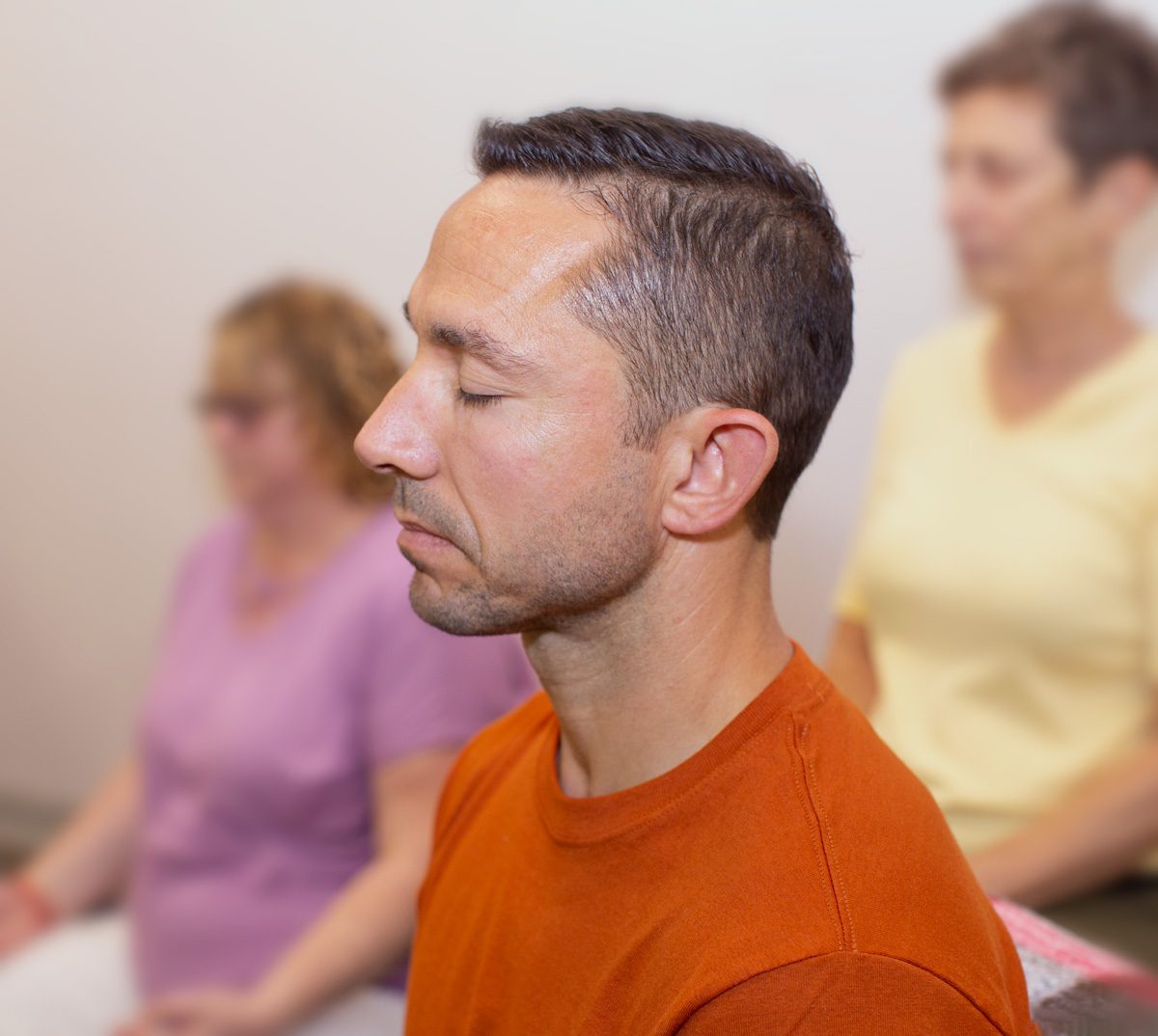 This tradition’s specialty is initiation that flashes your Self to arise within you, so you can know your Self. This inner awakening means you can bring your Self up within again, at any time, through meditation. So you meditate again and again, until the day that you live as that illumination all the time, outside and inside. To “know thyself,” as Socrates said, is the ultimate goal of the human being — to know your own Self, to be the beingness that you already are, no matter where you go, no matter what you do, no matter who you are with. That’s Gurudevi’s promise.
This tradition’s specialty is initiation that flashes your Self to arise within you, so you can know your Self. This inner awakening means you can bring your Self up within again, at any time, through meditation. So you meditate again and again, until the day that you live as that illumination all the time, outside and inside. To “know thyself,” as Socrates said, is the ultimate goal of the human being — to know your own Self, to be the beingness that you already are, no matter where you go, no matter what you do, no matter who you are with. That’s Gurudevi’s promise.
You want to know your own Self. You have been searching. You are ready to know, because you are reading a blog about yoga’s mysticism. That decision came from an impulse arising from your innermost depths. That impulse is the uplifting energy of your own Self, arising within you, striving to set you free. To know your own Self, you must meditate.
